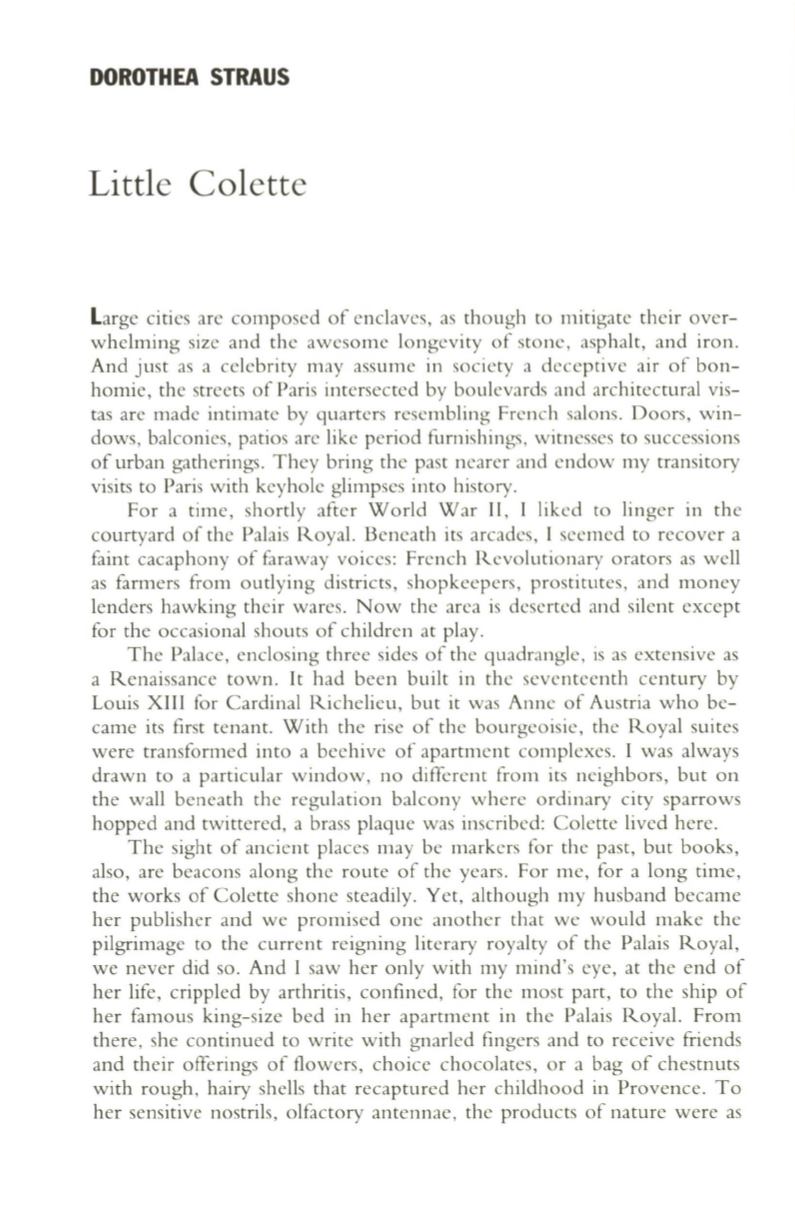
DOROTHEA STRAUS
Little Colette
Large cities are composed of enclaves, as though to mitigate their over–
whelming size and the awesome longevity of stone, asphalt, and iron.
And just as a celebrity may assume in society a deceptive air of bon–
homie, the streets of Paris intersected by boulevards and architectural vis–
tas are made intimate by quarters resembling French salons. Doors, win–
dows, balconies, patios are like period furnishings, witnesses to successions
of urban gatherings. They bring the past nearer and endow my transitory
visits to Paris with keyhole glimpses into history.
For a time, shortly after World War
II,
I liked to linger in the
courtyard of the Palais Royal. Beneath its arcades, I seemed to recover a
faint cacaphony of faraway voices: French Revolutionary orators as well
as farmers from outlying districts, shopkeepers, prostitutes, and money
lenders hawking their wares. Now the area is deserted and silent except
for the occasional shouts of children at play.
The Palace, enclosing three sides of the quadrangle , is as extensive as
a Renaissance town. It had been built in the seventeenth century by
Louis
XIII
for Cardinal Richelieu, but it was Anne of Austria who be–
came its first tenant. With the rise of the bourgeoisie, the Royal suites
were transformed into a beehive of apartment complexes. I was always
drawn to a particular window, no different from its neighbors, but on
the wall beneath the regulation balcony where ordinary city sparrows
hopped and twittered, a brass plaque was inscribed: Colette lived here .
The sight of ancient places may be markers for the past, but books,
also, are beacons along the route of the years. For me, for a long time,
the works of Colette shone steadily. Yet, although my husband became
her publisher and we promised one another that we would make the
pilgrimage to the current reigning literary royalty of the Palais Royal,
we never did so. And [ saw her only with my mind's eye, at the end of
her life, crippled by arthritis, confined, for the most part, to the ship of
her famous king-size bed in her apartment in the Palais Royal. From
there, she continued to write with gnarled fingers and to receive friends
and their offerings of flowers, choice chocolates, or a bag of chestnuts
with rough, hairy shells that recaptured her childhood in Provence. To
her sensitive nostrils, olfactory antennae, the products of nature were as


